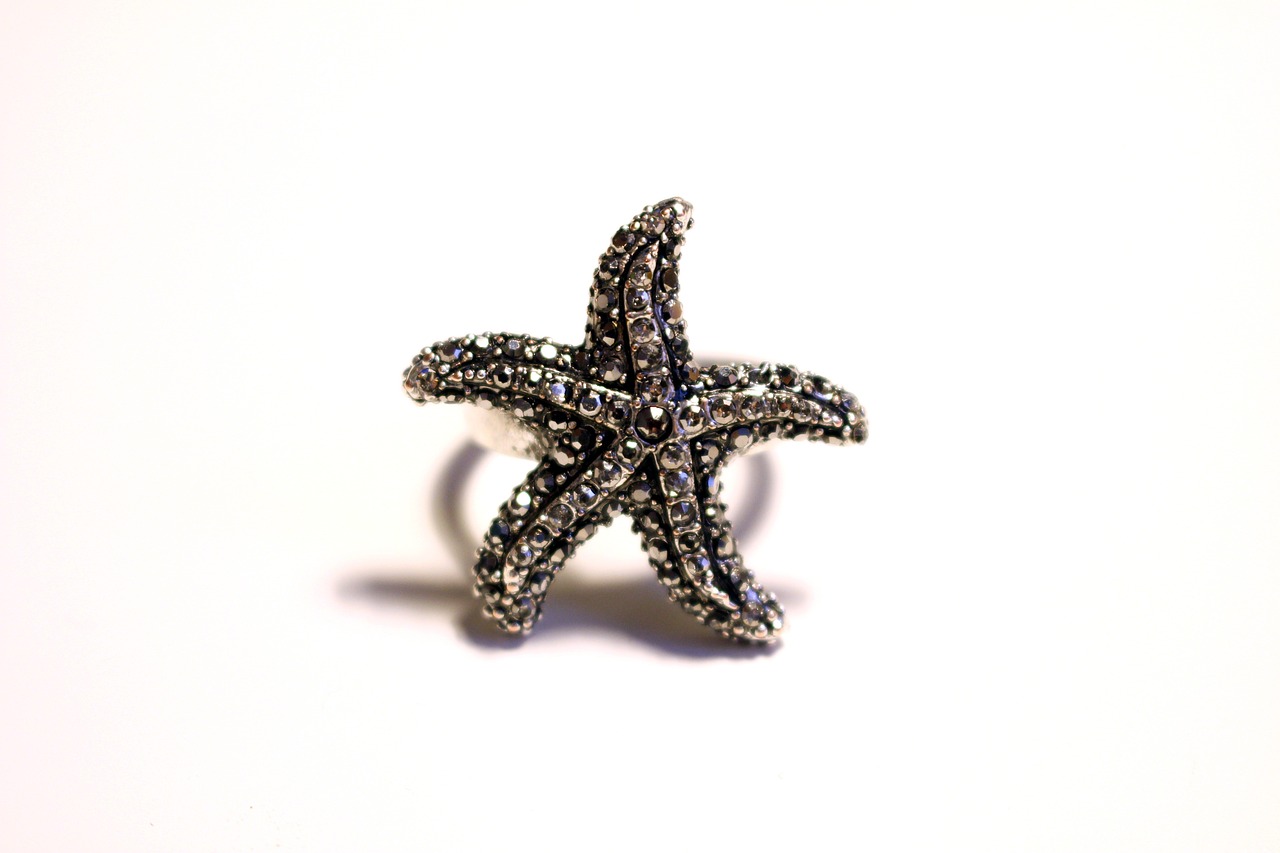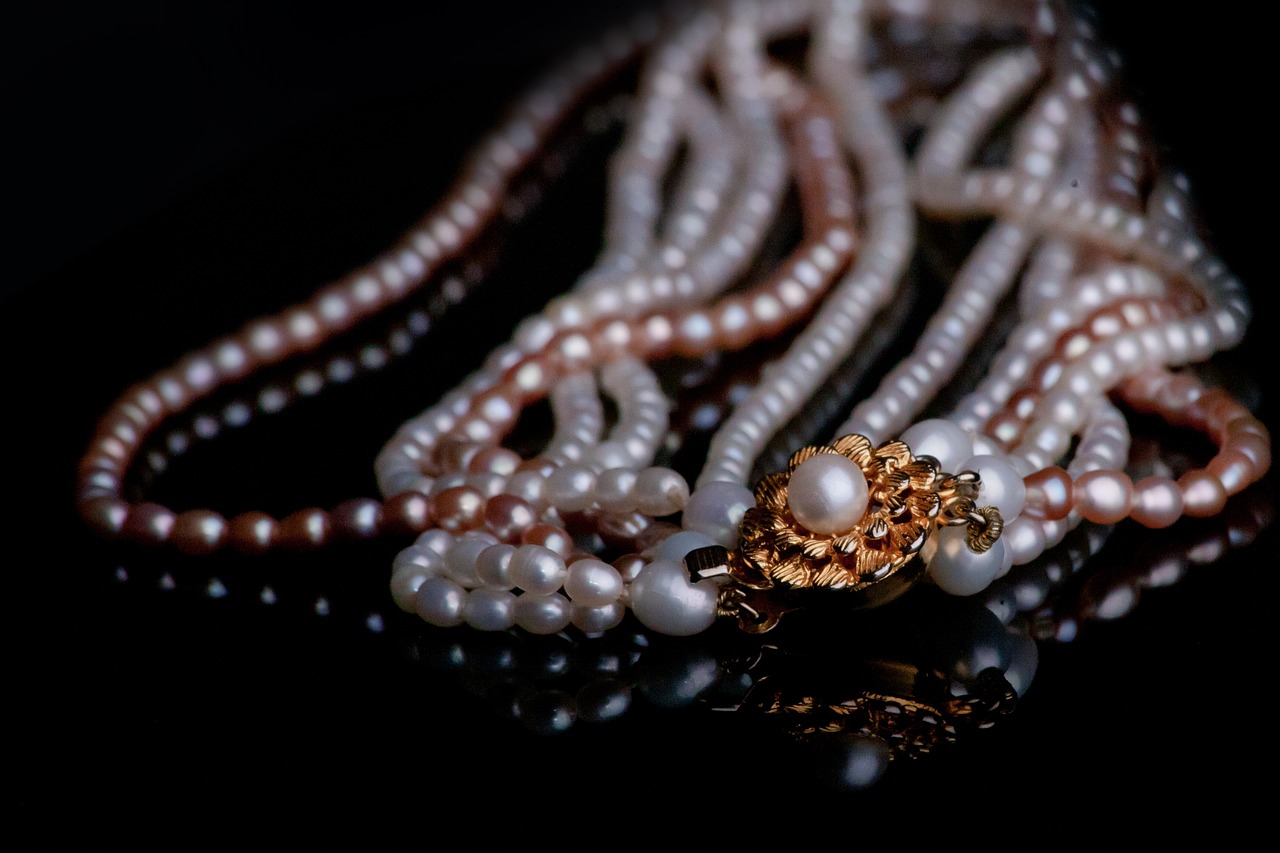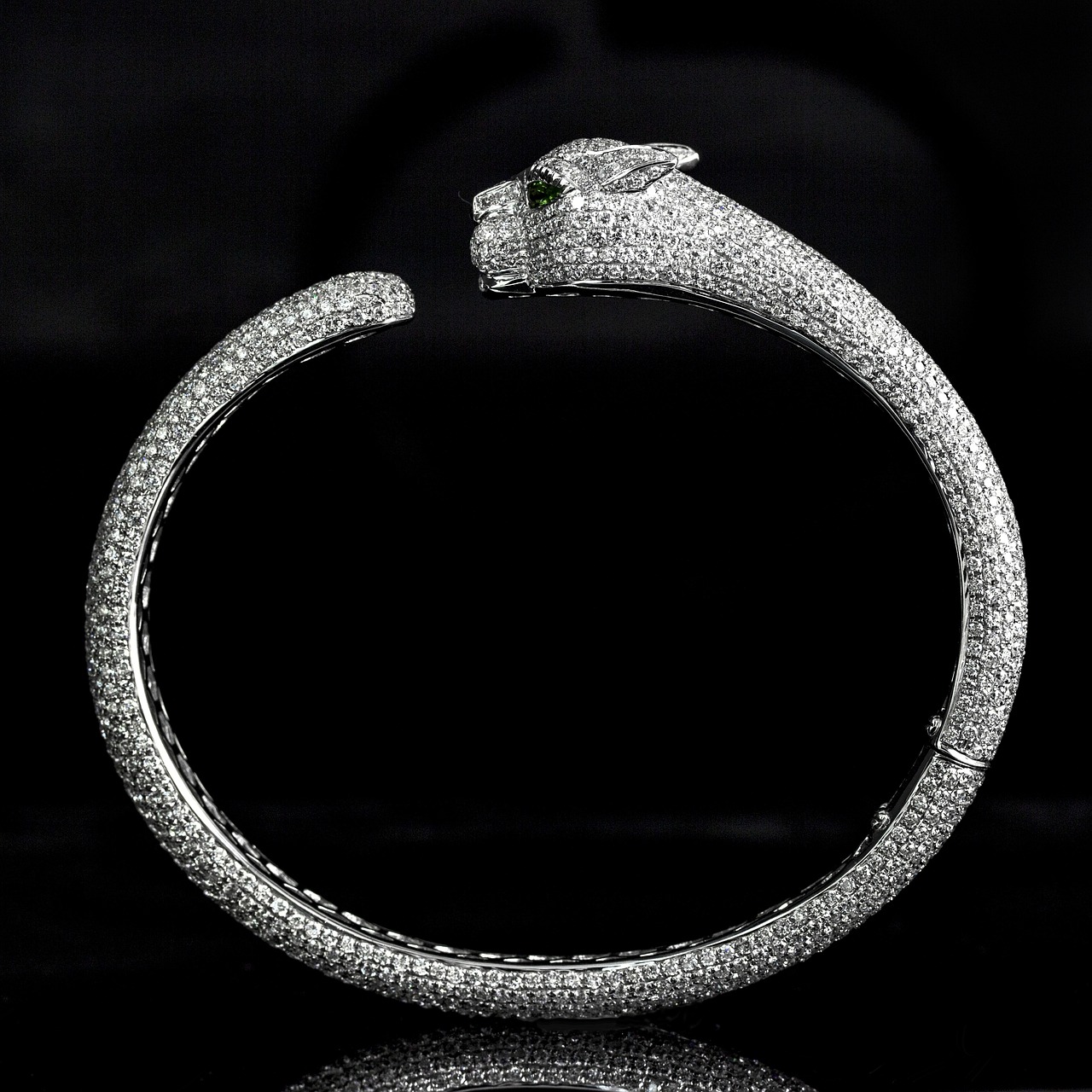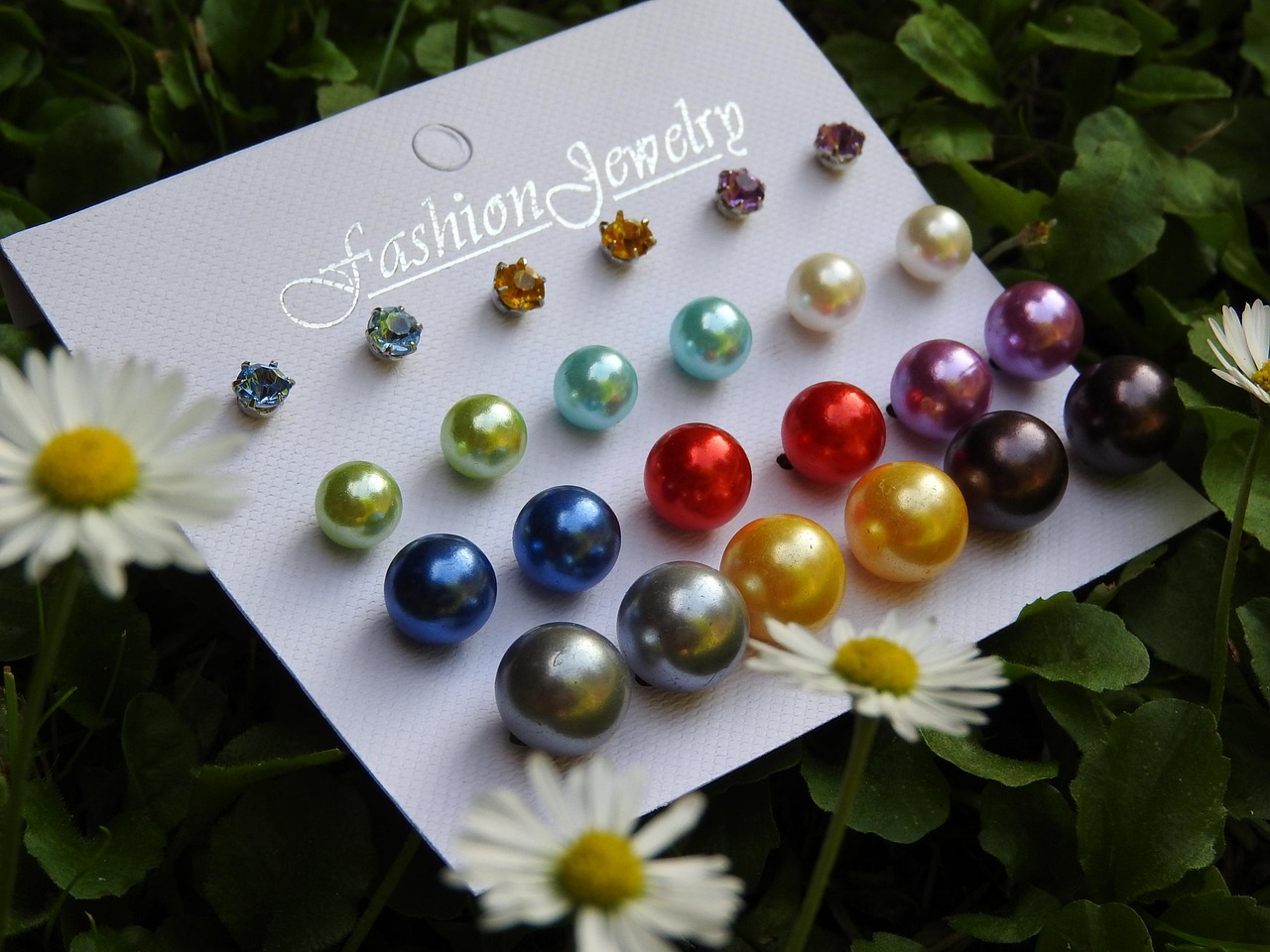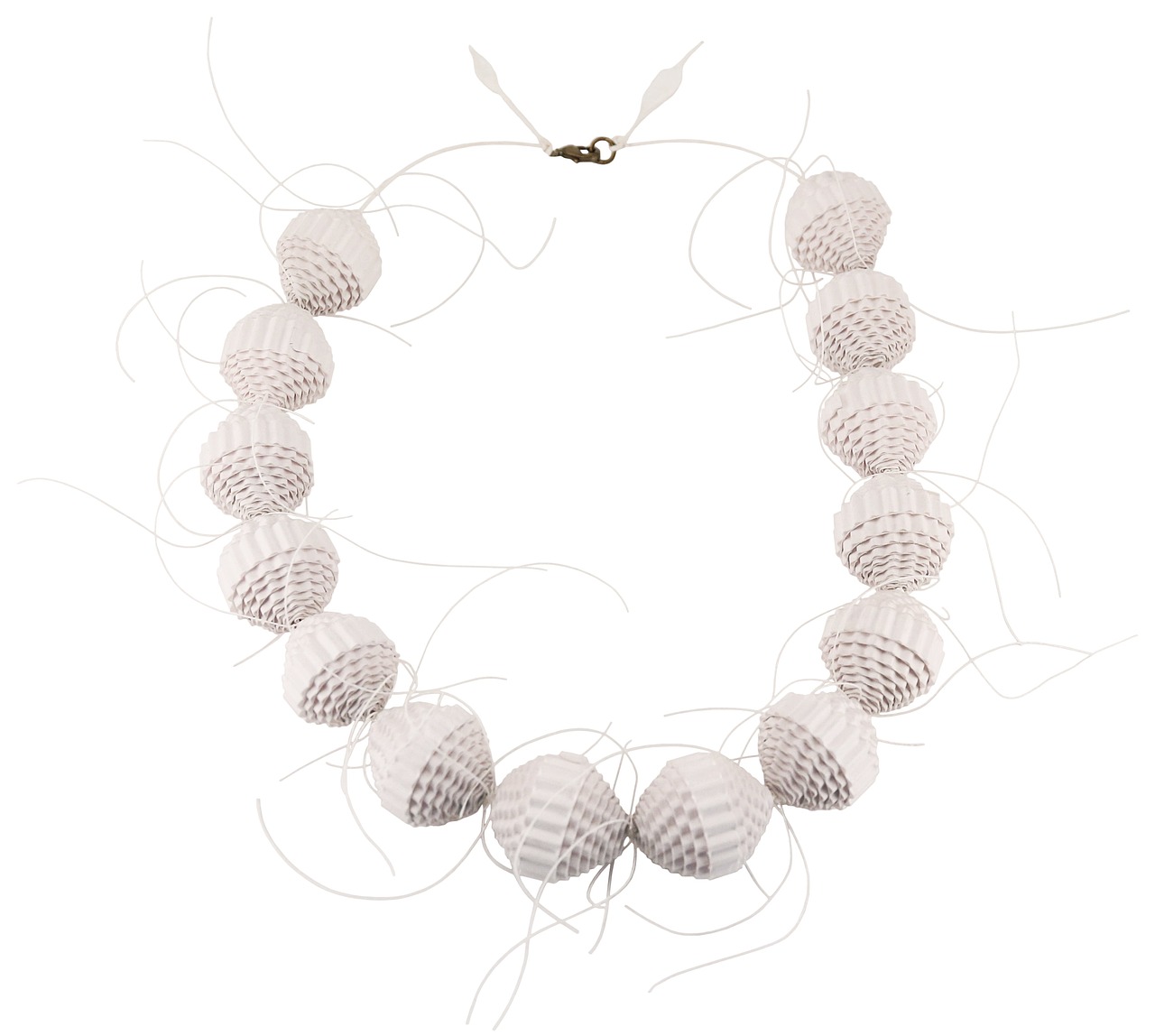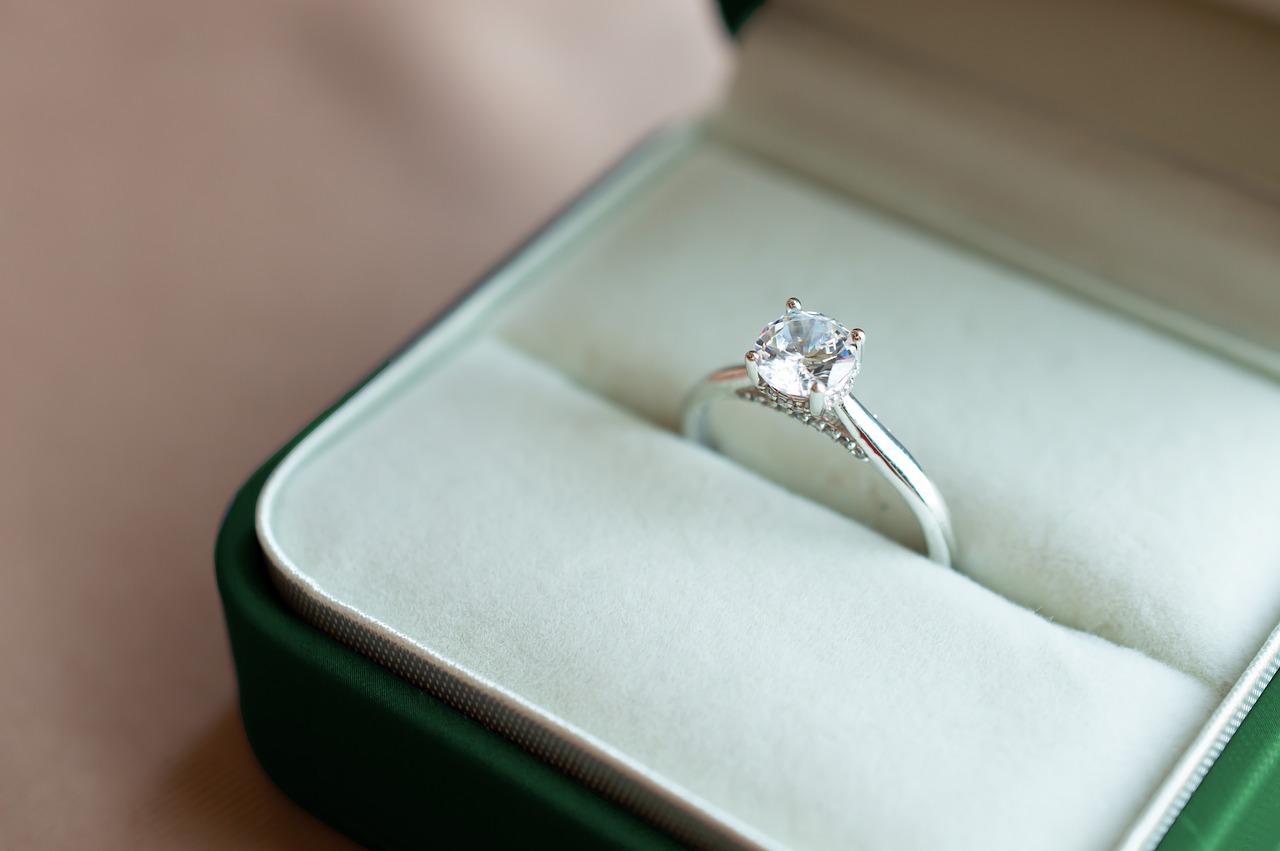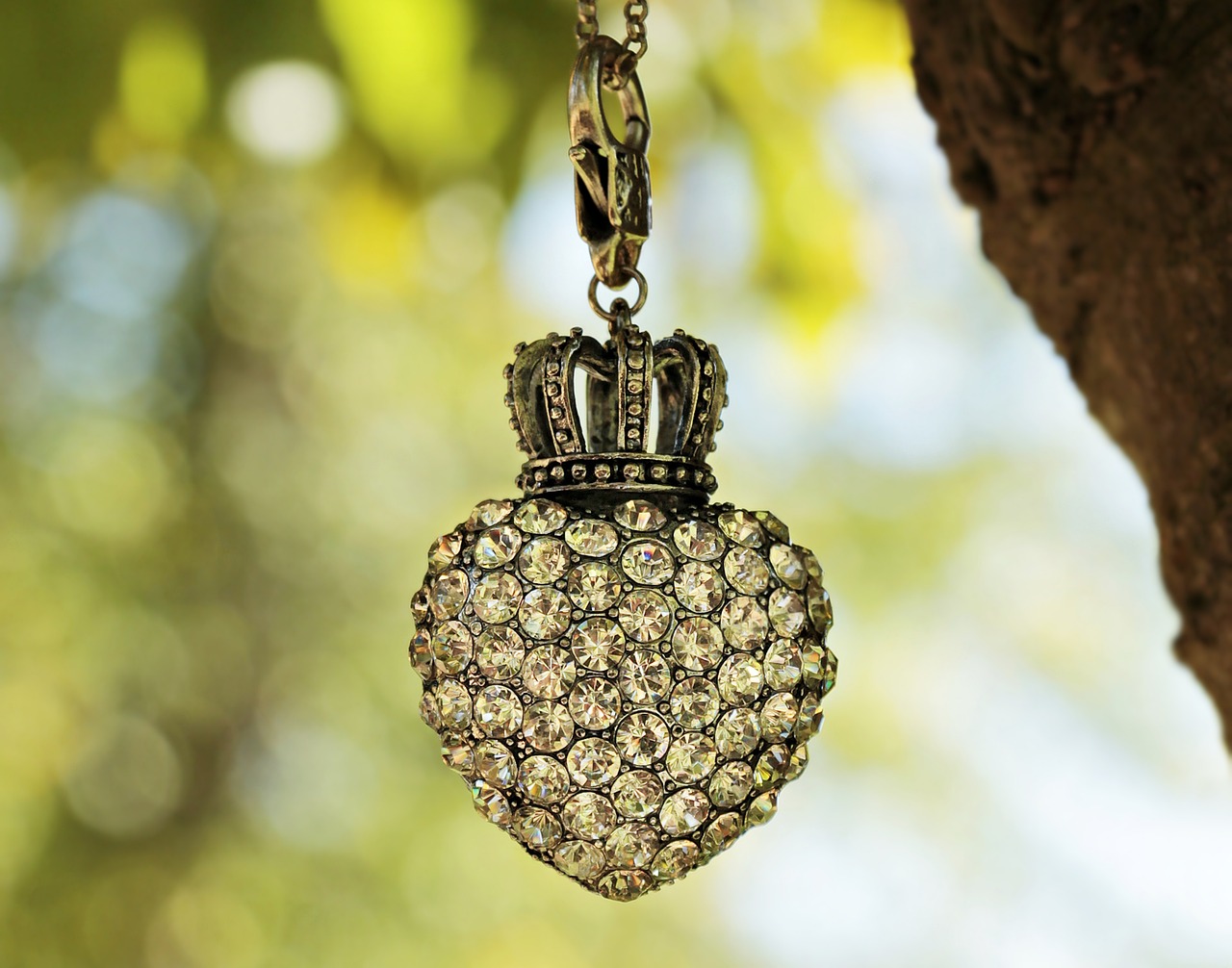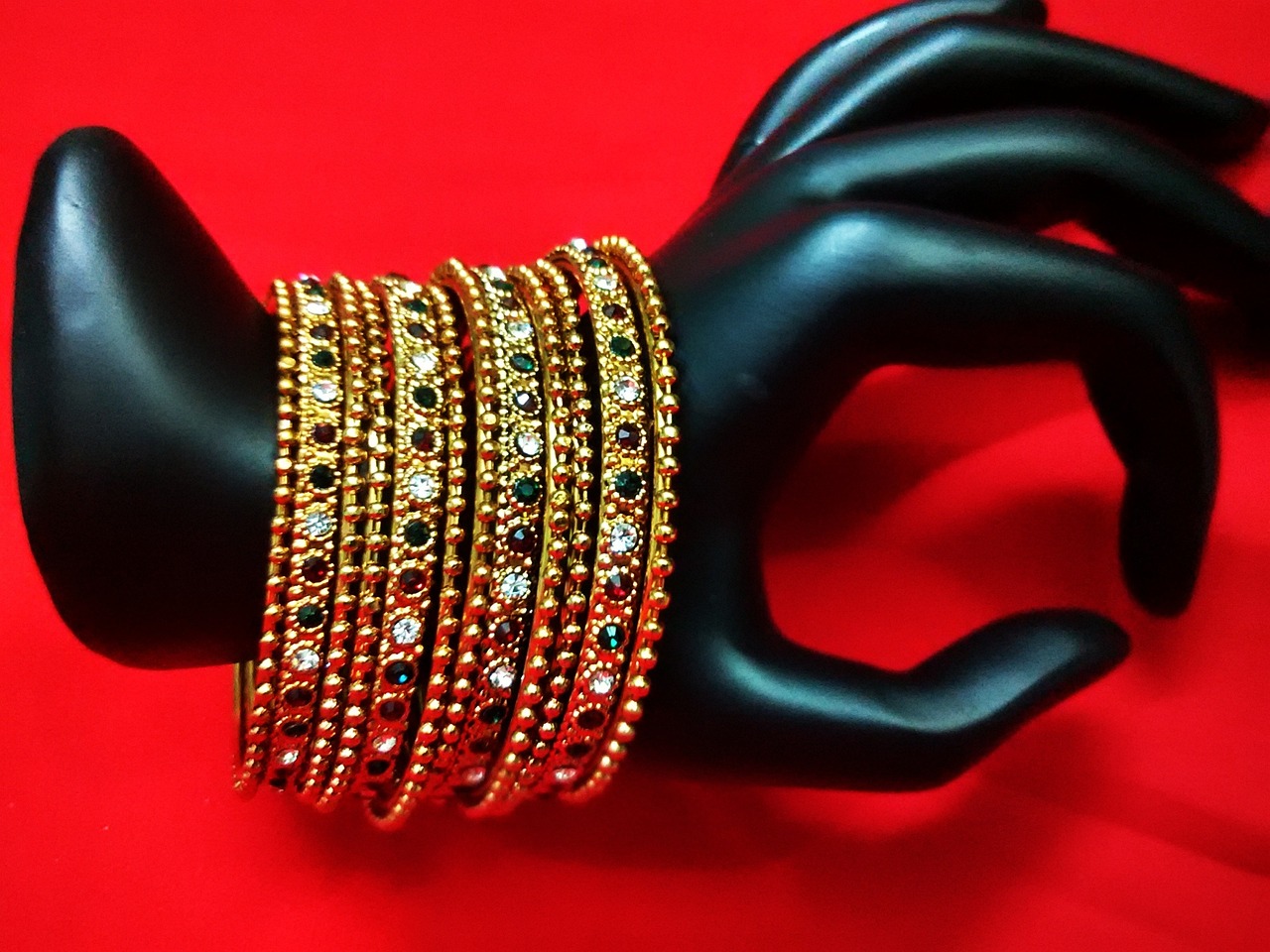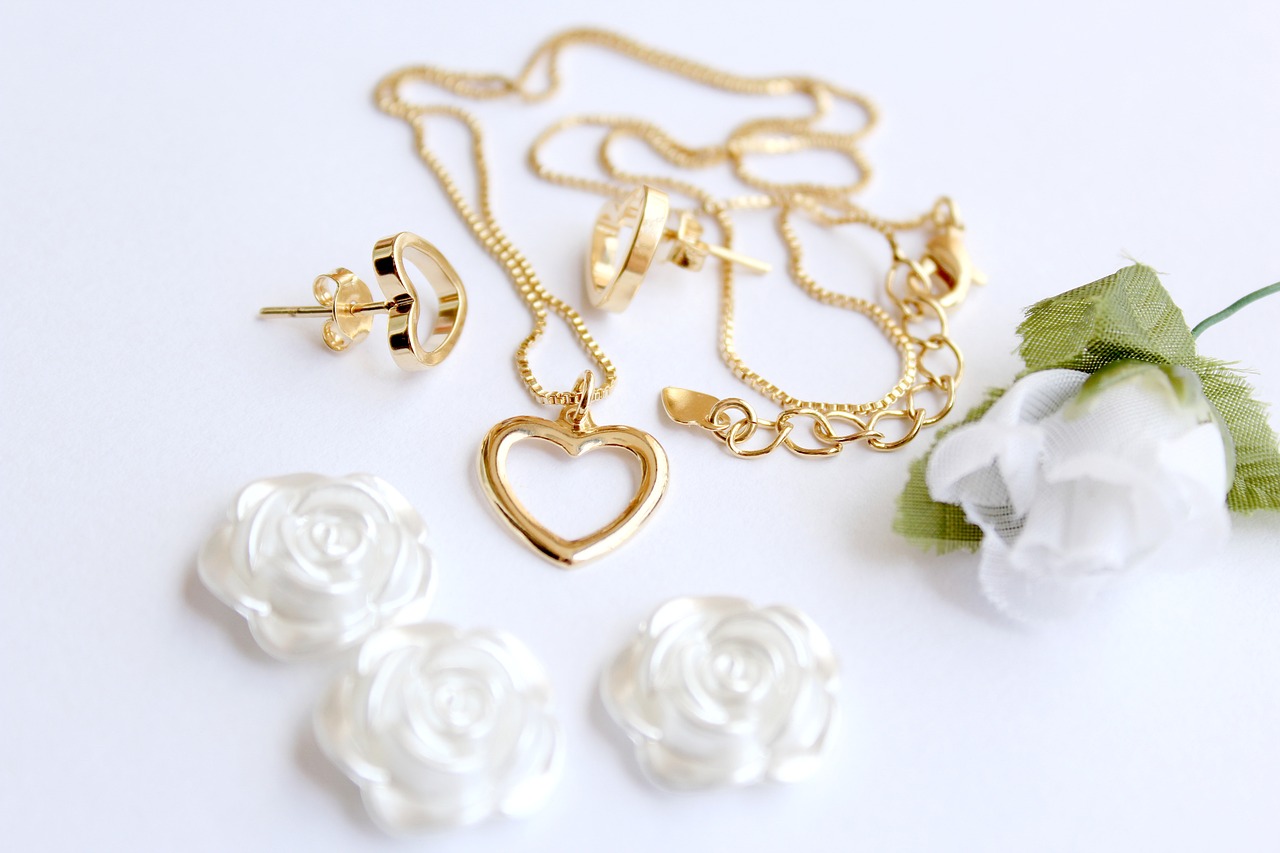Enhancing your masculine style can be as simple as incorporating the right accessories, like bracelets and rings. These pieces not only add character to your outfit but also reflect your personal style. In this guide, we will explore effective strategies to choose and style these accessories confidently.
When selecting bracelets, consider those that align with a masculine aesthetic. Opt for materials such as leather, metal, or rugged fabric. Colors like black, brown, and dark green are excellent choices, as they resonate with a more masculine vibe. Popular styles include:
- Leather cuffs – These add a rugged touch.
- Metal chains – They offer a bold statement.
- Beaded bracelets – For a casual, laid-back look.
Selecting rings that enhance your masculinity involves understanding your hand shape and personal style. Consider the following:
- Choose wider bands for larger hands, as they create a balanced look.
- Materials like stainless steel or tungsten provide a modern appeal.
- Rings with minimalistic designs often exude sophistication.
Different materials can significantly affect the overall vibe of your rings. Popular options include:
- Stainless steel – Known for its durability and sleek look.
- Titanium – Lightweight and strong, ideal for everyday wear.
- Leather – Adds texture and a more casual feel.
While gemstones are often associated with women’s jewelry, certain stones can add a unique touch to men’s rings. Consider stones like:
- Onyx – Offers a bold and masculine appearance.
- Turquoise – Adds a pop of color without being overwhelming.
Mixing various ring styles can create a unique look. Combine different textures, such as pairing a metal band with a leather ring. Ensure that the colors complement each other to maintain a cohesive appearance.
Layering bracelets can add depth to your style. Focus on balance and proportion by following these tips:
- Mix different materials, like leather and metal, for an interesting contrast.
- Stick to a color palette to maintain harmony.
- Vary the width of the bracelets to create visual interest.
Effective layering requires attention to detail. Consider these tips:
- Start with a base layer of one or two simple bracelets.
- Add statement pieces gradually to avoid overwhelming your look.
- Pay attention to the fit; ensure they are not too loose or tight.
Styling bracelets and rings can be tricky. Here are common mistakes to avoid:
- Wearing too many pieces can clutter your look.
- Ignoring the occasion; choose pieces that suit the setting.
- Neglecting personal style; ensure your accessories reflect who you are.
Proper care for your bracelets and rings is crucial for maintaining their appearance. Regular cleaning and appropriate storage can ensure longevity.
Different materials require specific cleaning methods. Here are some recommendations:
- Use a soft cloth for metal pieces to prevent scratches.
- For leather, use a damp cloth and leather conditioner.
- Gemstones can be cleaned with mild soap and water.
Storage plays a vital role in preserving your jewelry’s condition. Consider these effective solutions:
- Use a jewelry box with compartments to prevent tangling.
- Keep pieces away from direct sunlight to avoid fading.
- Store in a cool, dry place to prevent damage.

What Bracelets Suit a Masculine Aesthetic?
When it comes to enhancing your masculine aesthetic, choosing the right bracelets is crucial. The right bracelet can not only add a distinctive flair to your outfit but also reflect your personal style and confidence. In this guide, we will delve into the various aspects of selecting bracelets that resonate with a masculine look, including materials, colors, and designs.
To achieve a truly masculine look, it’s important to consider several factors when selecting bracelets. Here are some key points to keep in mind:
- Materials: Opt for materials that exude strength and durability. Leather is a popular choice, offering a rugged yet sophisticated vibe. Metal bracelets, such as those made from stainless steel or titanium, can add a modern edge to your style. Additionally, paracord bracelets are not only stylish but also functional, making them a great option for an active lifestyle.
- Colors: Stick to earthy tones or darker shades that resonate with masculinity. Colors like black, brown, and navy are versatile and can easily complement various outfits. If you prefer a pop of color, consider deep hues like burgundy or forest green, which can still maintain a masculine feel.
- Designs: Look for designs that are bold yet understated. Chunky bracelets or those with geometric patterns can make a statement without being overly flashy. Additionally, braided or woven designs can add texture while still remaining masculine.
When selecting a bracelet, it’s essential to ensure that it complements your overall outfit. For instance, if you’re wearing a casual look with jeans and a t-shirt, a leather cuff or a simple metal chain can enhance your appearance without overpowering it. Conversely, if you’re dressing up for a formal occasion, a sleek metal bracelet can add a touch of elegance.
Moreover, layering bracelets can also be an effective way to enhance your style. However, it’s important to maintain a balanced look. Consider mixing different materials and textures, such as pairing a leather bracelet with a metal one, to create a cohesive and attractive ensemble. Remember to keep the color palette in mind to avoid clashing tones.
Ultimately, the key to achieving a masculine aesthetic with bracelets lies in personal expression. Choose pieces that resonate with your individual style and make you feel confident. Whether you prefer a minimalist approach or a more layered look, the right bracelet can elevate your overall appearance and showcase your personality.
In conclusion, selecting the right bracelets is more than just a fashion choice; it’s about expressing who you are. By focusing on materials, colors, and designs that align with your masculine aesthetic, you can effortlessly enhance your style and make a lasting impression.

How to Choose the Right Rings for Men?
Choosing the right rings for men is not just about aesthetics; it’s about enhancing your personal style and making a statement. A well-selected ring can reflect your individuality, complement your hand shape, and elevate your entire look. This guide will delve into the essential factors to consider when choosing rings, ensuring that you find pieces that resonate with your masculinity and personal flair.
Before diving into materials and designs, it’s crucial to assess your hand shape. Different shapes can influence how a ring looks on you. For instance:
- Long Fingers: Opt for wider bands that provide balance.
- Short Fingers: Choose elongated designs that create an illusion of length.
- Thick Fingers: Consider thicker rings that can withstand the proportion.
- Thin Fingers: Delicate rings with intricate designs work well.
The material of a ring plays a significant role in its overall look and feel. Here are some popular materials that resonate with a masculine aesthetic:
- Stainless Steel: Durable and resistant to tarnish, it’s perfect for everyday wear.
- Titanium: Lightweight yet strong, titanium rings are ideal for active lifestyles.
- Gold: A classic choice that adds a touch of luxury; consider yellow, white, or rose gold based on your skin tone.
- Leather: For a rugged look, leather rings provide a unique texture and style.
When selecting a ring, consider designs that align with your personality:
- Simplicity: Minimalist designs often exude confidence and sophistication.
- Textured Bands: Rings with unique textures can add interest without being overly flashy.
- Statement Rings: If you prefer something bold, look for rings that feature unique designs or prominent gemstones.
While gemstones are often seen as feminine, certain stones can enhance a masculine ring. Consider options like:
- Onyx: This sleek black stone adds depth and elegance.
- Turquoise: A pop of color that can bring vibrancy to your style.
- Smoky Quartz: Offers a subtle yet distinctive look.
Don’t be afraid to mix different ring styles. Combining various textures and shapes can create a unique and personalized look. Here are some tips:
- Balance: Ensure that the rings you choose are balanced in terms of size and weight.
- Layering: Consider stacking rings for a more dynamic appearance, but avoid overcrowding your fingers.
- Color Coordination: Match metals and stones to your overall outfit for a cohesive look.
Ultimately, choosing the right rings for men involves a combination of understanding your hand shape, selecting suitable materials, and finding designs that resonate with your personal style. By considering these factors, you can effortlessly enhance your masculinity and elevate your overall look. Remember, confidence is key; wear your chosen rings with pride and let them reflect your unique personality.
What Materials Work Best for Men’s Rings?
When it comes to men’s rings, the material plays a crucial role in defining not only the ring’s appearance but also its overall vibe. Choosing the right material can enhance your style and reflect your personality. Below, we explore some of the most popular materials for men’s rings and how they contribute to a rugged yet stylish look.
One of the most favored materials for men’s rings is stainless steel. Known for its durability and resistance to tarnishing, stainless steel offers a sleek, modern aesthetic. It can be polished to a high shine or brushed for a more understated look. This versatility makes it suitable for various occasions, from casual outings to formal events.
Titanium is another exceptional choice for men’s rings. It is renowned for being incredibly lightweight yet exceptionally strong. This metal is hypoallergenic, making it a great option for those with sensitive skin. Additionally, titanium rings often come in a variety of finishes and colors, allowing for a personalized touch that can match any style.
For those seeking a more rustic and unique appearance, leather rings can be an excellent option. They offer a softer, more organic feel compared to metal rings and can be adorned with various embellishments like metal accents or stitching. Leather rings are perfect for casual settings and can be layered with metal rings for a bohemian vibe.
In recent years, alternative metals such as carbon fiber and tungsten have gained popularity. Carbon fiber rings are lightweight and have a modern, tech-inspired look, while tungsten rings are known for their scratch resistance and weighty feel. Both materials offer a contemporary twist on traditional ring styles.
For a truly unique style, consider rings made from wood. These rings often feature a combination of wood and metal, creating a striking contrast. Wooden rings are lightweight and can be crafted from various types of wood, each bringing its own distinct grain and color. This material is perfect for those who want to embrace a natural and earthy aesthetic.
While the focus is often on the ring’s primary material, incorporating gemstones can elevate the overall look. Stones like onyx, turquoise, or even diamonds can add a pop of color and personality to a ring. When selecting gemstones, consider your personal style and how they complement the ring’s material.
- Consider Your Lifestyle: If you lead an active lifestyle, opt for durable materials like titanium or tungsten.
- Personal Style: Choose materials that resonate with your aesthetic—whether rugged, modern, or classic.
- Skin Sensitivity: If you have sensitive skin, consider hypoallergenic options like titanium or certain stainless steels.
In conclusion, the material of your ring is a vital aspect that can significantly impact your overall style. By understanding the characteristics of different materials such as stainless steel, titanium, leather, and alternatives, you can make a more informed choice that aligns with your personal aesthetic and lifestyle needs.
Are Gemstones Suitable for Men’s Rings?
When it comes to men’s jewelry, the conversation often revolves around materials like metal and leather. However, gemstones can play a significant role in enhancing a man’s style. While traditionally associated with women’s accessories, certain gemstones possess qualities that can complement a masculine aesthetic beautifully. This article explores why stones like onyx and turquoise are particularly suitable for men’s rings, adding a distinctive flair that enhances masculinity.
Incorporating gemstones into men’s rings can serve as a statement piece that reflects personal style. Unlike more common materials, gemstones offer a unique touch that can convey strength and individuality. Here are a few reasons why gemstones can be a great choice:
- Symbolism: Many gemstones carry specific meanings and can symbolize traits like strength, courage, and wisdom.
- Color Variety: Gemstones come in a wide range of colors, allowing men to express their personality and style through their choice of stone.
- Durability: Certain gemstones, when set properly, can withstand daily wear, making them practical for rings.
Several gemstones stand out as particularly fitting for men’s rings:
- Onyx: Known for its deep black hue, onyx exudes a bold and sophisticated vibe. It pairs well with various metals, making it a versatile choice.
- Turquoise: This vibrant stone adds a pop of color and is often associated with protection and healing. Its unique patterns make each piece one-of-a-kind.
- Granite: While not a traditional gemstone, granite’s rugged appearance can appeal to men looking for a more earthy aesthetic.
- Jasper: With its rich colors and patterns, jasper brings a natural feel to men’s rings, making it a great choice for those who appreciate organic materials.
Styling gemstone rings can enhance your overall look. Here are some tips to consider:
- Choose the Right Metal: Pair your gemstone with metals like stainless steel or titanium for a rugged appearance, or opt for gold or silver for a more refined look.
- Consider Your Outfit: Ensure that the colors of the gemstone complement your clothing. For instance, a blue turquoise ring pairs well with neutral tones.
- Limit Other Accessories: When wearing a gemstone ring, keep other jewelry minimal to avoid overwhelming your look. A simple bracelet or watch can suffice.
When wearing gemstone rings, be mindful of common styling pitfalls:
- Over-accessorizing: Wearing multiple statement pieces can detract from the impact of your gemstone ring.
- Ignoring Proportions: Ensure that the size of the ring is proportionate to your hand. A bulky ring on a smaller hand may look out of place.
- Neglecting Maintenance: Gemstones require care; ensure you clean them regularly to maintain their luster.
In conclusion, gemstones like onyx and turquoise can significantly enhance men’s rings, adding a unique touch that resonates with masculinity. By understanding how to choose, style, and care for these pieces, men can confidently incorporate gemstones into their jewelry collections, showcasing their individuality and style.
How to Mix and Match Ring Styles?
When it comes to accessorizing, mixing and matching ring styles can create a truly unique look that reflects your personal style. The key to achieving this lies in understanding how to combine various textures, shapes, and materials while maintaining a cohesive appearance. In this guide, we will explore effective strategies for mixing ring styles, ensuring you can confidently express your individuality.
Mixing different ring styles allows you to showcase your creativity and personality. It provides an opportunity to blend diverse textures and designs, resulting in a visually appealing and layered look. By combining rings, you can create an ensemble that stands out, making a statement without overwhelming your overall appearance.
When selecting rings to mix and match, consider the textures and shapes of each piece. For instance, pairing a sleek metal band with a chunky stone ring can create an exciting contrast. Similarly, combining rings with different finishes, such as matte and polished, adds depth to your look. Aim for balance by ensuring that the rings complement each other rather than compete for attention.
The material of your rings plays a significant role in how well they mix together. Stainless steel, titanium, and leather are excellent choices for a masculine aesthetic. When combining materials, consider the overall vibe you want to achieve. For example, pairing a leather ring with a metal band can create a rugged yet sophisticated look.
Color coordination is another crucial aspect of mixing ring styles. Aim for a harmonious color palette that ties your rings together. Neutral tones like silver, black, and brown are versatile and can easily be mixed with more vibrant colors. If you choose to incorporate colored stones, ensure they complement the overall color scheme of your outfit and other accessories.
Layering rings can enhance your style, but it’s essential to do so thoughtfully. Start with a base ring, such as a simple band, and gradually add more intricate pieces. This layering technique creates a focal point while allowing each ring to shine. Remember to vary the widths of the rings; pairing a wide ring with several thinner bands can create a balanced and visually appealing effect.
Your personal style should guide your choices when mixing ring styles. Experiment with different combinations to discover what feels comfortable and authentic to you. Don’t hesitate to try unconventional pairings, as these often lead to the most unique looks. Pay attention to how each ring interacts with your skin tone and overall aesthetic.
While mixing ring styles can be fun, there are a few common mistakes to avoid. First, steer clear of overcrowding your fingers with too many rings. This can lead to a cluttered appearance. Additionally, ensure that the rings you choose are proportionate to your hand size; oversized rings on smaller hands can look out of place. Lastly, avoid mixing styles that clash, such as overly ornate rings with minimalist designs.
In conclusion, mixing and matching ring styles is an art that requires a thoughtful approach. By understanding textures, shapes, materials, and color coordination, you can create a unique and cohesive look that reflects your personality. Embrace experimentation, and don’t shy away from showcasing your individuality through your ring choices.
What Bracelet Styles Are Most Popular Among Men?
When it comes to enhancing a masculine outfit, bracelets serve as more than just accessories; they are statements of style and personality. From rugged leather cuffs to sleek metal chains, the variety of bracelet styles available today allows men to express their individuality while adding a touch of flair to their attire. In this section, we will explore the most popular bracelet styles for men and provide tips on how to wear them effectively.
- Leather Cuffs: These bracelets exude a rugged charm that resonates with a masculine aesthetic. Available in various widths and textures, leather cuffs can be worn alone or layered with other pieces for a more dynamic look.
- Metal Chains: Often made from stainless steel or sterling silver, metal chain bracelets offer a bold statement. Their shiny finish and sturdy design make them perfect for casual and formal outfits alike.
- Beaded Bracelets: These versatile pieces often incorporate materials like wood, stone, or metal beads. Beaded bracelets can add a pop of color and texture, making them suitable for both relaxed and polished looks.
- Woven Bracelets: Crafted from materials such as leather or fabric, woven bracelets provide a more laid-back vibe. These are great for casual wear and can be easily stacked with other bracelets.
- Friendship Bracelets: Originally designed to symbolize friendship, these colorful woven or braided pieces have gained popularity as fashionable accessories. They can be worn solo or combined with other styles for a more eclectic look.
Wearing bracelets effectively involves understanding balance and proportion. Here are some practical tips:
- Mix Materials: Combining different materials—like leather and metal—can create an interesting contrast. This mix adds depth to your outfit without overwhelming it.
- Layer with Care: When layering multiple bracelets, aim for a cohesive look. Stick to a color palette or similar materials to ensure harmony.
- Consider Your Outfit: Match your bracelet style to the overall vibe of your outfit. For example, wear leather cuffs with casual attire and metal chains with more formal wear.
- Mind the Fit: Ensure your bracelets fit comfortably on your wrist. They should be snug enough to stay in place but loose enough to allow for movement.
While there are numerous options, some styles may not suit every man:
- Overly Flashy Pieces: Avoid bracelets that are too flashy or adorned with excessive embellishments, as they can detract from a masculine look.
- Inappropriate Sizes: Ensure that your bracelets are proportionate to your wrist size. Oversized pieces can look clunky and out of place.
In summary, the right bracelet can elevate your masculine style, offering a unique way to express yourself. By understanding the various styles available and how to wear them effectively, you can enhance your outfit and showcase your personal flair.
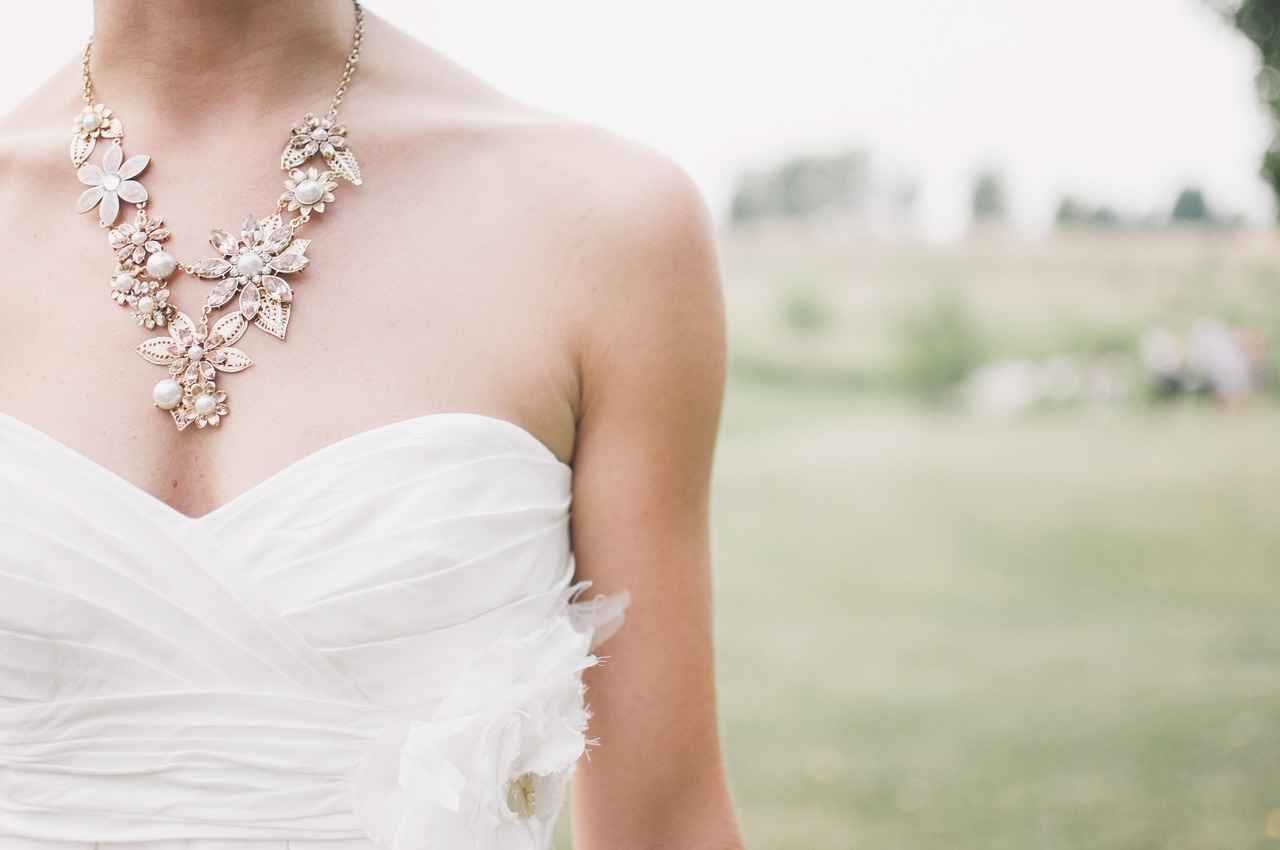
How to Layer Bracelets for a Masculine Look?
Layering bracelets is an art that can significantly enhance your masculine style. When done correctly, it adds depth and character to your overall look, allowing you to express your personality without overwhelming your outfit. The key to successful layering lies in understanding the principles of balance and proportion.
Effective bracelet layering involves a thoughtful combination of different styles, materials, and colors. Here are some essential tips to achieve a stylish layered look:
- Choose a Focal Point: Start with one standout piece, such as a bold leather cuff or a chunky metal bracelet. This will serve as the foundation for your layering.
- Mix Textures: Combining different materials like leather, metal, and fabric can add visual interest. For instance, pairing a sleek metal bracelet with a rugged leather one creates a dynamic contrast.
- Color Coordination: Stick to a cohesive color palette. Neutral tones like black, brown, and gray are versatile and can be easily mixed. For a bolder statement, consider incorporating a pop of color that complements your outfit.
- Vary Widths: Layering bracelets of varying widths can create a more balanced appearance. For example, pair a wide cuff with slimmer bangles to avoid a bulky look.
While there are no strict rules, a good guideline is to wear between three to five bracelets for a balanced look. This number allows for enough variety without overwhelming your wrist. Pay attention to how each piece interacts with one another and adjust accordingly.
Absolutely! The occasion plays a significant role in determining how you layer your bracelets. For casual outings, feel free to mix and match different styles. However, for more formal events, opt for a more refined look with fewer pieces, focusing on quality over quantity.
Maintaining balance is crucial in bracelet layering. Here are some strategies:
- Keep It Simple: If you’re wearing a statement piece, keep the other bracelets minimal to avoid a cluttered look.
- Consider Your Outfit: Your clothing should complement your bracelets. For example, if you’re wearing a patterned shirt, opt for solid-colored bracelets.
- Pay Attention to Arm Movement: Ensure that your bracelets are comfortable and do not clink excessively when you move your arms.
Many men make common mistakes when layering bracelets. Here are a few to watch out for:
- Overloading Your Wrist: Wearing too many bracelets can look overwhelming. Stick to the recommended number for a polished appearance.
- Ignoring Proportions: If you have a larger wrist, avoid overly delicate bracelets that can get lost. Opt for chunkier styles that complement your frame.
- Neglecting Personal Style: Always choose pieces that resonate with your personal style. Authenticity is key to pulling off any look.
In conclusion, mastering the art of layering bracelets can elevate your masculine style and showcase your individuality. By focusing on balance, proportion, and your personal aesthetic, you can create a look that is both stylish and uniquely yours. Remember, the goal is to enhance your outfit, not overshadow it, so choose wisely and wear your layered bracelets with confidence!
What Are the Best Tips for Bracelet Layering?
When it comes to styling bracelets for a masculine look, effective layering is crucial. It requires not just an eye for aesthetics but also a keen understanding of how to combine different elements to create a cohesive and balanced appearance. Here are some valuable tips to help you master the art of layering your bracelets.
Color plays a significant role in layering bracelets. Aim for a harmonious color palette that complements your outfit. For instance, if you’re wearing neutral tones, consider adding a pop of color with one or two vibrant bracelets. Conversely, if your outfit is already bold, opt for more muted tones to maintain balance.
Layering isn’t just about colors; it’s also about mixing materials. Combining different textures can add depth and interest to your look. For example, pairing a leather cuff with metal bangles can create a rugged yet stylish vibe. Just be mindful that the materials should complement each other—too many contrasting textures can overwhelm your outfit.
When layering, proportion is key. Start with a statement piece, such as a chunky bracelet, and build around it with thinner options. This technique helps to create a balanced look. Additionally, ensure that the bracelets fit well together in terms of size; for instance, mixing oversized pieces with dainty ones can create an unintentional clash.
Establishing a focal point in your bracelet layering can guide the viewer’s eye. Choose one standout piece to draw attention, and let the other bracelets support it without competing for attention. This approach not only enhances your style but also showcases your personal taste.
Your wrist size can affect how bracelets look when layered. If you have a smaller wrist, opt for thinner bracelets that won’t overwhelm your frame. Conversely, those with larger wrists can experiment with wider cuffs and multiple layers without losing proportion.
Don’t hesitate to experiment with different styles and combinations. Try layering a mix of casual and formal pieces to see what works best for you. For example, pairing a sleek metal bracelet with a rugged leather strap can create a unique contrast that enhances your overall look.
The occasion can dictate how you layer your bracelets. For casual outings, feel free to be more adventurous with your choices. However, for formal events, it’s advisable to keep it simple and elegant. A couple of refined pieces can make a strong statement without appearing overdone.
Finally, regularly assess your bracelet collection. Trends change, and so do personal styles. Keep your collection updated by adding new pieces that resonate with your evolving aesthetic. This not only keeps your style fresh but also encourages you to try new layering techniques.
By following these tips, you can effectively layer your bracelets to achieve a masculine and stylish look. Remember, the key is to experiment, have fun, and develop a style that truly reflects your personality.
How to Avoid Common Styling Mistakes?
When it comes to accessorizing, bracelets and rings can significantly enhance a man’s style. However, many men often face challenges in styling these accessories correctly. Understanding how to avoid common mistakes can lead to a more polished and masculine appearance.
One of the most frequent mistakes men make is wearing jewelry that does not fit properly. Bracelets that are too tight can be uncomfortable and unflattering, while those that are too loose may look sloppy. Similarly, rings should fit snugly but not too tight, allowing for easy removal. To ensure the right fit, measure your wrist and finger size accurately before purchasing.
Another common issue is the lack of color coordination. Wearing bracelets and rings that clash with your outfit can draw attention for the wrong reasons. Stick to a color palette that complements your clothing. For instance, if you wear a lot of neutral tones, consider bracelets in earthy colors or metallic finishes. Incorporating a pop of color can also work, but ensure it aligns with the overall look.
The choice of materials plays a crucial role in how your accessories are perceived. Leather, metal, and beaded bracelets can all convey different vibes. For a more rugged look, opt for leather or stainless steel. If you’re aiming for something more refined, consider silver or gold. Mixing materials can add interest, but be cautious not to overdo it.
Over-accessorizing is a common pitfall. Wearing too many bracelets or rings can overwhelm your look. Aim for balance by limiting yourself to one or two statement pieces paired with simpler options. For example, if you wear a bold ring, opt for a minimalist bracelet to keep the focus on your hands.
While it can be tempting to follow the latest trends, it’s essential to choose pieces that resonate with your personal style. Timeless styles, like a classic leather cuff or a simple silver band, can be more versatile and enduring. Trends can be fun but should be approached with caution, ensuring they align with your overall aesthetic.
Confidence is key when wearing accessories. If you feel unsure about your choices, it will show. Practice wearing your selected pieces in front of a mirror to see how they look together. Over time, you will develop a sense of what works for you. Remember, the best accessory is one that you wear with confidence.
- Start Simple: Begin with basic pieces and gradually add more complexity.
- Experiment: Don’t be afraid to try different combinations until you find what feels right.
- Seek Inspiration: Look at style icons or fashion blogs for ideas on how to wear jewelry.
- Trust Your Instincts: Ultimately, wear what makes you feel good and reflects your personality.
By avoiding these common styling mistakes, you can enhance your masculine appearance with bracelets and rings, ensuring you always look polished and put together.

How to Care for Your Jewelry?
Caring for your jewelry is essential to maintain its beauty and longevity. Bracelets and rings, often worn daily, require special attention to keep them looking their best. In this guide, we will explore effective cleaning methods and storage techniques to ensure your cherished pieces last for years.
Jewelry can be a significant investment, both financially and emotionally. Proper care helps prevent tarnishing, scratching, and other forms of damage. Regular maintenance not only preserves the aesthetic appeal but also ensures that your jewelry remains a cherished part of your style.
Different materials require specific cleaning techniques. Here are some effective methods:
- Gold and Silver: Use a soft cloth to gently buff the surface. For deeper cleaning, a mixture of mild soap and warm water can be effective. Soak for a few minutes and gently scrub with a soft brush.
- Stainless Steel: Wipe with a damp cloth and dry immediately to prevent water spots. For stubborn stains, a bit of baking soda mixed with water can work wonders.
- Leather: Avoid water. Instead, use a dry cloth to wipe off dirt. For conditioning, apply a specialized leather conditioner.
- Gemstones: Use a soft brush and a mixture of water and mild soap. Be cautious with porous stones like turquoise, which can absorb moisture.
Storage is crucial in preserving the condition of your jewelry. Here are some effective storage solutions:
- Jewelry Boxes: Use a dedicated jewelry box with compartments to prevent pieces from tangling or scratching each other.
- Soft Pouches: For individual pieces, soft pouches can provide protection against dust and scratches.
- Anti-Tarnish Strips: Place these in your storage box to help prevent tarnishing, especially for silver and gold pieces.
- Keep Away from Moisture: Store your jewelry in a dry area, as humidity can lead to tarnishing and deterioration.
Regular cleaning is essential, but the frequency depends on how often you wear your pieces. For daily wear items, a quick clean every few weeks is advisable, while less frequently worn jewelry can be cleaned every few months. Always inspect your jewelry for any signs of wear or damage during cleaning.
When caring for your jewelry, avoid these common mistakes:
- Using Harsh Chemicals: Stay away from bleach and ammonia, as they can damage metals and stones.
- Wearing Jewelry During Activities: Remove your jewelry before exercising, swimming, or doing household chores to prevent damage.
- Ignoring Repairs: If you notice any loose stones or broken clasps, seek professional repair immediately to prevent further damage.
By following these cleaning and storage techniques, you can ensure that your bracelets and rings retain their allure and charm for years to come. A little care goes a long way in preserving the beauty of your jewelry.
What Cleaning Methods Are Recommended?
Maintaining the brilliance and allure of your jewelry is essential for ensuring it remains a cherished part of your collection. Different materials require specific cleaning methods, and understanding these techniques can help you keep your pieces looking their best. This guide will provide insights into the best practices for cleaning various types of jewelry, ensuring that you can confidently care for your treasured items.
Jewelry can be a significant investment, both financially and sentimentally. Regular cleaning not only maintains the aesthetic appeal but also prolongs the lifespan of your pieces. Dirt, oils, and environmental factors can dull the shine and cause damage over time, making proper care crucial.
- Gold Jewelry: To clean gold, use a mixture of warm water and mild dish soap. Soak the jewelry for about 15 minutes, then gently scrub with a soft toothbrush. Rinse thoroughly and dry with a soft cloth.
- Silver Jewelry: Silver tarnishes easily, so it’s essential to use a silver polish or a mixture of baking soda and water. Apply the paste with a soft cloth, rub gently, and rinse well.
- Gemstone Jewelry: Different gemstones require different care. For most, a solution of warm water and mild soap is safe. Avoid harsh chemicals that can damage stones like pearls or opals. Always check specific care instructions for each gemstone.
- Stainless Steel: Clean stainless steel with warm, soapy water and a microfiber cloth. For tougher stains, a mixture of vinegar and water can be effective.
- Leather Jewelry: Leather should not be soaked. Instead, wipe it down with a damp cloth and let it air dry. Use a leather conditioner periodically to maintain its suppleness.
Having the right tools can make the cleaning process easier and more effective. Consider investing in:
- Ultrasonic Cleaners: These devices use sound waves to create tiny bubbles that gently clean jewelry without scratching.
- Soft Brushes: A soft-bristled toothbrush can help reach intricate designs and settings.
- Microfiber Cloths: These are perfect for polishing and drying without leaving scratches.
The frequency of cleaning depends on how often you wear your jewelry. As a general rule:
- Daily Wear: Clean your jewelry at least once a week.
- Occasional Wear: Clean before and after special occasions.
- Storage: If your jewelry is stored for long periods, a cleaning session every few months is advisable.
While cleaning your jewelry, be cautious of these common pitfalls:
- Using Harsh Chemicals: Avoid bleach or ammonia, as they can damage metals and gemstones.
- Over-Scrubbing: Excessive pressure can scratch surfaces, particularly on softer materials.
- Neglecting to Rinse: Always rinse off soap or cleaning solutions thoroughly to prevent residue buildup.
By following these cleaning methods and tips, you can ensure that your jewelry remains as stunning as the day you bought it. Regular maintenance not only enhances your pieces’ beauty but also preserves their value over time.
How to Store Your Jewelry Properly?
Proper storage of your jewelry is essential for maintaining its condition and longevity. Jewelry can be delicate and prone to damage if not stored correctly. This guide will explore various effective storage solutions that not only prevent damage and tangling but also ensure your pieces are always ready to wear.
Jewelry can be an investment, both financially and sentimentally. Proper storage helps in:
- Preventing tarnish: Certain metals can tarnish over time when exposed to air and moisture.
- Avoiding scratches: Storing pieces together can lead to scratches and damage.
- Maintaining shape: Proper storage can help maintain the shape of delicate pieces.
There are several effective storage solutions that cater to different types of jewelry:
- Jewelry boxes: A dedicated jewelry box with compartments can keep your pieces organized and safe. Look for one with a soft lining to prevent scratches.
- Drawers with dividers: If you prefer to keep your jewelry out of sight, using a drawer with dividers can be a great option. This allows for easy access while keeping everything organized.
- Individual pouches: For travel or to prevent tangling, consider using soft pouches for each piece. This is especially useful for necklaces and rings.
Necklaces are particularly prone to tangling. Here are some tips:
- Use hooks: Hanging your necklaces on hooks or a dedicated jewelry tree can prevent them from tangling.
- Individual compartments: Store each necklace in its own compartment or pouch to avoid knots.
Bracelets and rings require their own unique storage considerations:
- Bracelet bars: Utilize a bracelet bar to keep your bracelets displayed and tangle-free.
- Ring holders: Use a ring holder or a small dish to keep your rings organized and easily accessible.
Jewelry with gemstones requires extra care:
- Separate storage: Store gemstone jewelry separately to prevent scratches and damage from harder materials.
- Avoid exposure: Keep them away from direct sunlight as some stones can fade over time.
In addition to proper storage, regular maintenance is key:
- Regular cleaning: Clean your jewelry regularly to remove dirt and oils that can cause tarnish.
- Check for damage: Periodically inspect your pieces for any signs of damage or wear.
By following these storage tips and solutions, you can ensure that your jewelry remains in excellent condition, ready to wear whenever you need it. Proper storage not only preserves the beauty of your pieces but also extends their lifespan, allowing you to enjoy them for years to come.
Frequently Asked Questions
- What types of bracelets are best for a masculine look?
When aiming for a masculine style, consider bracelets made from materials like leather, metal, or rugged fabrics. Styles such as leather cuffs, beaded bracelets, or chunky metal chains can enhance your overall aesthetic and add a bold touch to your outfit.
- How do I choose the right ring for my hand?
To select the perfect ring, start by assessing your hand shape and size. If you have larger hands, opt for wider bands or statement rings. For slimmer hands, more delicate designs can provide a balanced look. Always choose materials and styles that resonate with your personal vibe.
- Can I wear gemstones in men’s rings?
Absolutely! Certain gemstones like onyx, turquoise, or even smoky quartz can add a unique flair to men’s rings. They not only enhance your style but also convey a sense of individuality and confidence.
- What are the best practices for layering bracelets?
Layering bracelets can be an art! Focus on mixing textures and materials while keeping a cohesive color palette. Aim for balance—avoid overcrowding one wrist, and consider varying the sizes of the bracelets for a more dynamic look.
- How should I care for my jewelry?
Proper care is key to maintaining your jewelry’s shine and integrity. Regularly clean your pieces with a soft cloth, and store them in a dry, cool place, preferably in a jewelry box or pouch to prevent scratches and tangling.
